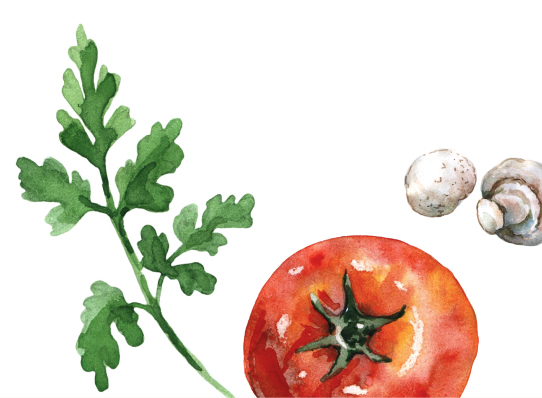Foodies with Worries
I love food — being around it, cooking and eating it, sharing and learning about it — and most meaningfully, making sure that the bounty and access I have is also available to others.
I was at the National Food Policy Conference, sponsored by the Consumer Federation of America, in DC last week. Attendees included individuals from government agencies, the food industry, academia, public interest organizations, various nonprofits, nutritionists, activists, PR companies — all interested in key food policy issues. As we sat for two days, listening to speakers and panelists on controversial topics facing consumers, manufacturers, producers, and government, the urgency and complexity of food policy issues multiplied, exacerbated by a fiscal crisis, political inertia, and special interest lobbying. There is a lot to think about, there is a lot to worry about and there is so much to do.
Over the past several months, I have attended a handful of food policy events, from TedxManhattan‘s “Changing the Way We Eat” to Just Food‘s “Eat-Work-Grow the Movement” Conference to the Laurie M. Tisch Center for Food, Education & Policy’s “Bringing Policy to the Table: New Food Strategies for a Healthier Society.” And there are more gatherings and conversations weekly across a wide range of institutions and organizations across the country, too numerous to list. With each conversation, I learn more and go deeper into topics I am already familiar with. Here are the top hot topics from my perspective, inspired by the DC conference and on agendas everywhere.
1. How safe is our food? How does the FDA monitor domestic food products (as well as what comes into the U.S. food system from other countries?) What about the additives food companies use in processed food under the GRAS provision (Generally Recognized As Safe) since 1958 — a provision intended for common food ingredients, now used to categorize close to 10,000 food additives, 3,000 of which have not been tested by the FDA’s own admission. Tom Neltner, the director of the Food Additives Project in The Pew Health Group at The Pew Charitable Trusts, shared research on testing guidelines. Another concern is the labeling of genetically modified organisms (GMOs) in our food; in the U.S., food companies are not required to list GMO or genetically engineered (GE) foods. Along these same lines, the use of antibiotics in the animals we eat is a growing concern. Other critical issues around animal welfare standards continue to emerge and challenge our system where meat is artificially cheap, the externalized cost borne via environmental and health bills we all pay. Individual state-level laws that prohibit (and in fact criminalize) undercover reporting of factory farming of animals — the “Ag Gag” — are troubling, to say the least.
2. Food Waste — NRDC released figures estimating food waste to be 30-40 percent of what travels from farm to fork through the U.S. food system. The EPA estimates this to be over 65 billion pounds of food a year, a large portion from household waste. The implications of this figure range from tangible quantities of food which could be used to fight hunger; the impact of wasted food production and our limited natural resources as agriculture and food production can be extremely energy and water-intensive; and food waste is a major component of our landfills. Food waste could be diverted into productive use through composting. The UN has launched an anti-food waste initiative, thinkeatsave.org, underscoring the global importance of immediate action.
3. Hunger and Food Insecurity — according to the USDA, in 2012, 1 in 4 Americans participated in a government food or nutrition assistance program. Their research shows that 68 percent of food-insecure families contain at least one full-time working adult. Most food stamp/SNAP beneficiaries are children, seniors, working parents, and people with disabilities. A signature of our times, the prevalence of hunger with obesity, is in part the result of lack of access to healthy foods in many low-income communities and the predominance of cheap, unhealthy calories. Other contributing factors, such as lifestyle, unemployment, and healthcare, are part of a complex web of social conditions, with food being a key component. It must be unacceptable to all of us that in the richest country in the history of the world, families strategically plan for days when family members will not eat because they have no food.
4. Immigration Reform — how the lack of policy affects agricultural workers and farmers with a cascade of issues from decent working conditions and fair wages for migrant and undocumented farmworkers to the ability of farmers to hire steady and authorized workers. In the U.S., we underestimate how important the immigrant contribution is to our food system.
5. Farm Bill legislation — from subsidies to the largest growers to the impact on key nutrition program funding, the Farm Bill touches vast swaths of American lives in ways most of us don’t know. Polls show that many Americans favor reducing subsidy payments to the largest farmers, and at the same time want to continue to pay for programs funding local as well as international anti-hunger relief efforts. Congress did not succeed in passing a new farm bill in 2012 and extended the 2008 bill for nine months.
6. Impact of climate change on our food supply — the extreme weather patterns affecting farm communities, from droughts, flooding, temperature extremes, and other uncontrollable conditions. Every conversation about agriculture now includes provisions for thinking about an altered landscape.
7. The impact of reduced resources on regulation, legislation, and change — what does the current economic climate hold for food policy issues? Think about this — the poultry industry has grown four-fold since the Reagan era, yet the inspection budget has not. Looking ahead, the poultry industry will potentially self-regulate. Currently, government inspectors look at 140 birds/minute. Under proposed changes, poultry industry inspectors will look at 175/minute, leaving 1/3 of a second for each bird to be inspected. This will save the government about $90 million over 3 years. Self-regulating industry — what an optimistic concept.
This is a partial list — a mini “menu” of the myriad of issues categorized as the food policy agenda. I return to my day job as CEO of Great Performances, where we feed the most privileged New Yorkers daily, with new determination to make every meal we cook help fuel an agenda that demands accountability for what is in the food we serve and who is missing at the table.
–Liz Neumark











